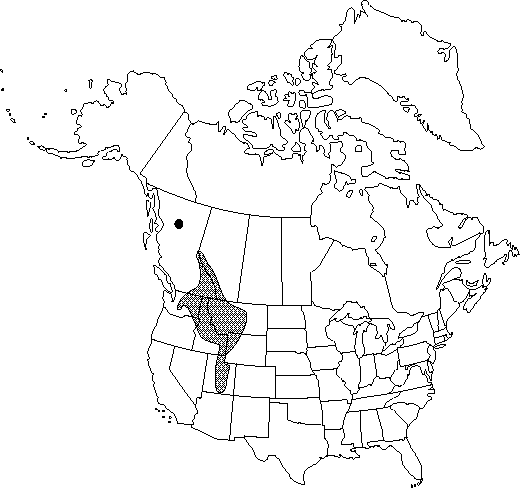Difference between revisions of "Aquilegia flavescens"
Botany (Fortieth Parallel), 10. 1871.
FNA>Volume Importer |
imported>Volume Importer |
||
| (7 intermediate revisions by 2 users not shown) | |||
| Line 12: | Line 12: | ||
}}{{Treatment/ID/Special_status | }}{{Treatment/ID/Special_status | ||
|code=F | |code=F | ||
| − | |label= | + | |label=Illustrated |
}} | }} | ||
|basionyms= | |basionyms= | ||
| Line 18: | Line 18: | ||
|name=Aquilegia flavescens var. miniana | |name=Aquilegia flavescens var. miniana | ||
|authority=J. F. Macbride & Payson | |authority=J. F. Macbride & Payson | ||
| + | |rank=variety | ||
}} | }} | ||
|hierarchy=Ranunculaceae;Aquilegia;Aquilegia flavescens | |hierarchy=Ranunculaceae;Aquilegia;Aquilegia flavescens | ||
| Line 26: | Line 27: | ||
}}<!-- | }}<!-- | ||
| − | --><span class="statement" id="st- | + | --><span class="statement" id="st-undefined" data-properties=""><b>Stems </b>20-70 cm. <b>Basal</b> leaves 2×-ternately compound, 8-30 cm, much shorter than stems; leaflets green adaxially, to 14-42 mm, not viscid; primary petiolules to 13-67 mm (leaflets not crowded), glabrous or pilose. <b>Flowers</b> nodding; sepals perpendicular to floral axis, yellow or tinged with pink, elliptic-lanceolate to oblong, 12-22 × 4-10 mm, apex obtuse to acute or sometimes acuminate; petals: spurs yellow, tips incurved, 10-18 mm, stout, evenly tapered from base or more abruptly narrowed near middle, blades cream colored, oblong, 7-10 × 4-8 mm; stamens 12-17 mm. <b>Follicles</b> 18-27 mm; beak 8-10 mm.</span><!-- |
-->{{Treatment/Body | -->{{Treatment/Body | ||
| Line 33: | Line 34: | ||
|elevation=1300-3500 m | |elevation=1300-3500 m | ||
|distribution=Alta.;B.C.;Idaho;Mont.;Oreg.;Utah;Wash.;Wyo. | |distribution=Alta.;B.C.;Idaho;Mont.;Oreg.;Utah;Wash.;Wyo. | ||
| − | |discussion=<p>Aquilegia flavescens sometimes forms hybrid swarms with A. formosa var. formosa, which grows at lower elevations through much of its range. Intermediate specimens having pinkish red flowers and petal blades 5-6 mm are occasionally found where these species grow together. The name A. flavescens var. miniana has sometimes been mistakenly applied to these intermediates, but the type of var. miniana is a typical, pink-sepaled plant of A. flavescens.</p> | + | |discussion=<p><i>Aquilegia flavescens</i> sometimes forms hybrid swarms with <i>A. formosa </i>var.<i> formosa</i>, which grows at lower elevations through much of its range. Intermediate specimens having pinkish red flowers and petal blades 5-6 mm are occasionally found where these species grow together. The name <i>A. flavescens</i> var. miniana has sometimes been mistakenly applied to these intermediates, but the type of var. miniana is a typical, pink-sepaled plant of <i>A. flavescens</i>.</p> |
|tables= | |tables= | ||
|references= | |references= | ||
| Line 42: | Line 43: | ||
-->{{#Taxon: | -->{{#Taxon: | ||
name=Aquilegia flavescens | name=Aquilegia flavescens | ||
| − | |||
|authority=S. Watson | |authority=S. Watson | ||
|rank=species | |rank=species | ||
| Line 56: | Line 56: | ||
|publication title=Botany (Fortieth Parallel), | |publication title=Botany (Fortieth Parallel), | ||
|publication year=1871 | |publication year=1871 | ||
| − | |special status=Endemic; | + | |special status=Endemic;Illustrated |
| − | |source xml=https:// | + | |source xml=https://bitbucket.org/aafc-mbb/fna-data-curation/src/2e0870ddd59836b60bcf96646a41e87ea5a5943a/coarse_grained_fna_xml/V3/V3_21.xml |
|genus=Aquilegia | |genus=Aquilegia | ||
|species=Aquilegia flavescens | |species=Aquilegia flavescens | ||
| − | |||
| − | |||
| − | |||
| − | |||
| − | |||
| − | |||
| − | |||
| − | |||
| − | |||
| − | |||
| − | |||
| − | |||
| − | |||
| − | |||
| − | |||
| − | |||
| − | |||
| − | |||
| − | |||
| − | |||
| − | |||
| − | |||
| − | |||
| − | |||
| − | |||
| − | |||
| − | |||
| − | |||
| − | |||
}}<!-- | }}<!-- | ||
-->[[Category:Treatment]][[Category:Aquilegia]] | -->[[Category:Treatment]][[Category:Aquilegia]] | ||
Latest revision as of 22:47, 5 November 2020
Stems 20-70 cm. Basal leaves 2×-ternately compound, 8-30 cm, much shorter than stems; leaflets green adaxially, to 14-42 mm, not viscid; primary petiolules to 13-67 mm (leaflets not crowded), glabrous or pilose. Flowers nodding; sepals perpendicular to floral axis, yellow or tinged with pink, elliptic-lanceolate to oblong, 12-22 × 4-10 mm, apex obtuse to acute or sometimes acuminate; petals: spurs yellow, tips incurved, 10-18 mm, stout, evenly tapered from base or more abruptly narrowed near middle, blades cream colored, oblong, 7-10 × 4-8 mm; stamens 12-17 mm. Follicles 18-27 mm; beak 8-10 mm.
Phenology: Flowering summer (Jun–Aug).
Habitat: Moist mountain meadows and alpine slopes
Elevation: 1300-3500 m
Distribution

Alta., B.C., Idaho, Mont., Oreg., Utah, Wash., Wyo.
Discussion
Aquilegia flavescens sometimes forms hybrid swarms with A. formosa var. formosa, which grows at lower elevations through much of its range. Intermediate specimens having pinkish red flowers and petal blades 5-6 mm are occasionally found where these species grow together. The name A. flavescens var. miniana has sometimes been mistakenly applied to these intermediates, but the type of var. miniana is a typical, pink-sepaled plant of A. flavescens.
Selected References
None.
